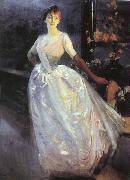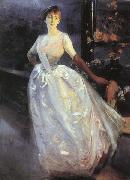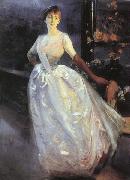Wholesale Oil Painting No Minimum |
|||||||||||
|
|
|||||||||||

|
|||||||||||
|
|
|
||||||||
Albert Besnard1849-1934 French Albert Besnard Art Locations (b Paris, 2 June 1849; d Paris, 4 Dec 1936). French painter, printmaker and designer. He was born to an artistic family and was precociously talented. In 1866 he entered the Ecole des Beaux-Arts, where he studied under Jean Franois Brmond (1807-68) and Alexandre Cabanel. His Salon dbut in 1868 and his subsequent entries were well received, and in 1874 he won the Prix de Rome with the Death of Timophanes, Tyrant of Corinth (Paris, Ecole N. Sup. B.-A.). Remaining in Italy for five years, Besnard worked in an academic style influenced by Pietro da Cortona and Michelangelo. |
||||||||
|
|
||||||||
Portrait of Madame Roger Jourdain
Portrait of Madame Roger Jourdain Painting ID:: 69 |
1866 1866 |
|||||||
|
|
||||||||
Albert Besnard1849-1934 French Albert Besnard Art Locations (b Paris, 2 June 1849; d Paris, 4 Dec 1936). French painter, printmaker and designer. He was born to an artistic family and was precociously talented. In 1866 he entered the Ecole des Beaux-Arts, where he studied under Jean Franois Brmond (1807-68) and Alexandre Cabanel. His Salon dbut in 1868 and his subsequent entries were well received, and in 1874 he won the Prix de Rome with the Death of Timophanes, Tyrant of Corinth (Paris, Ecole N. Sup. B.-A.). Remaining in Italy for five years, Besnard worked in an academic style influenced by Pietro da Cortona and Michelangelo. |
||||||||
|
|
||||||||
|
|
Portrait of Madame Roger Jourdain
Portrait of Madame Roger Jourdain Painting ID:: 78713 |
1886(1886)
Medium Oil on canvas
cyf 1886(1886) Medium Oil on canvas cyf |
||||||
|
|
||||||||
Paul-Albert Besnard(2 June 1849 --4 December 1934) was a French painter and printmaker. He was born in Paris and studied at the École des Beaux-Arts, studied with Jean Bremond and was influenced by Alexandre Cabanel. He won the Prix de Rome in 1874 with the painting Death of Timophanes Until about 1880 he followed the academic tradition, but then broke away completely, and devoted himself to the study of colour and light as conceived by the Impressionists. The realism of this group never appealed to his bold imagination, but he applied their technical method to ideological and decorative works on a large scale, such as his frescoes at the Sorbonne, the Ecole de Pharmacie, the ceiling of the Comedie-Française (main theatre in Paris), the Salle des Sciences at the Hôtel de Ville, the mairie of the Ier arrondissement, and the chapel of Berck hospital, for which he painted twelve Stations of the Cross in an entirely modern spirit. A great virtuoso, he achieved brilliant successes alike in watercolour, pastel, oil and etching, both in portraiture, in landscape and in decoration. His close analysis of light can be studied in his picture La femme qui se chauffe at the Luxembourg in Paris, one of a large group of nude studies of which a later example is Une Nymphe au bord de la mer; and in the work produced during and after a visit to India in 1911. A large panel, Peace by Arbitration, was completed seven days before the outbreak of war in 1914. |
||||||||
|
|
||||||||
|
|
Portrait of Madame Roger Jourdain
Portrait of Madame Roger Jourdain Painting ID:: 79362 |
1886(1886)
Medium Oil on canvas
cyf 1886(1886) Medium Oil on canvas cyf |
||||||
|
|
||||||||
|
Paul-Albert Besnard (2 June 1849 --4 December 1934) was a French painter and printmaker. He was born in Paris and studied at the École des Beaux-Arts, studied with Jean Bremond and was influenced by Alexandre Cabanel. He won the Prix de Rome in 1874 with the painting Death of Timophanes Until about 1880 he followed the academic tradition, but then broke away completely, and devoted himself to the study of colour and light as conceived by the Impressionists. The realism of this group never appealed to his bold imagination, but he applied their technical method to ideological and decorative works on a large scale, such as his frescoes at the Sorbonne, the Ecole de Pharmacie, the ceiling of the Comedie-Française (main theatre in Paris), the Salle des Sciences at the Hôtel de Ville, the mairie of the Ier arrondissement, and the chapel of Berck hospital, for which he painted twelve Stations of the Cross in an entirely modern spirit. A great virtuoso, he achieved brilliant successes alike in watercolour, pastel, oil and etching, both in portraiture, in landscape and in decoration. His close analysis of light can be studied in his picture La femme qui se chauffe at the Luxembourg in Paris, one of a large group of nude studies of which a later example is Une Nymphe au bord de la mer; and in the work produced during and after a visit to India in 1911. A large panel, Peace by Arbitration, was completed seven days before the outbreak of war in 1914. Portrait of Madame Roger Jourdain 1886(1886) Medium Oil on canvas cyf |
||||||||
|
|
||||||||
|
Prev Next
|
||||||||
|
|
||||||||
|
Related Paintings to Paul-Albert Besnard :. |
||||||||
|
|
||||||||
|
CONTACT US |



